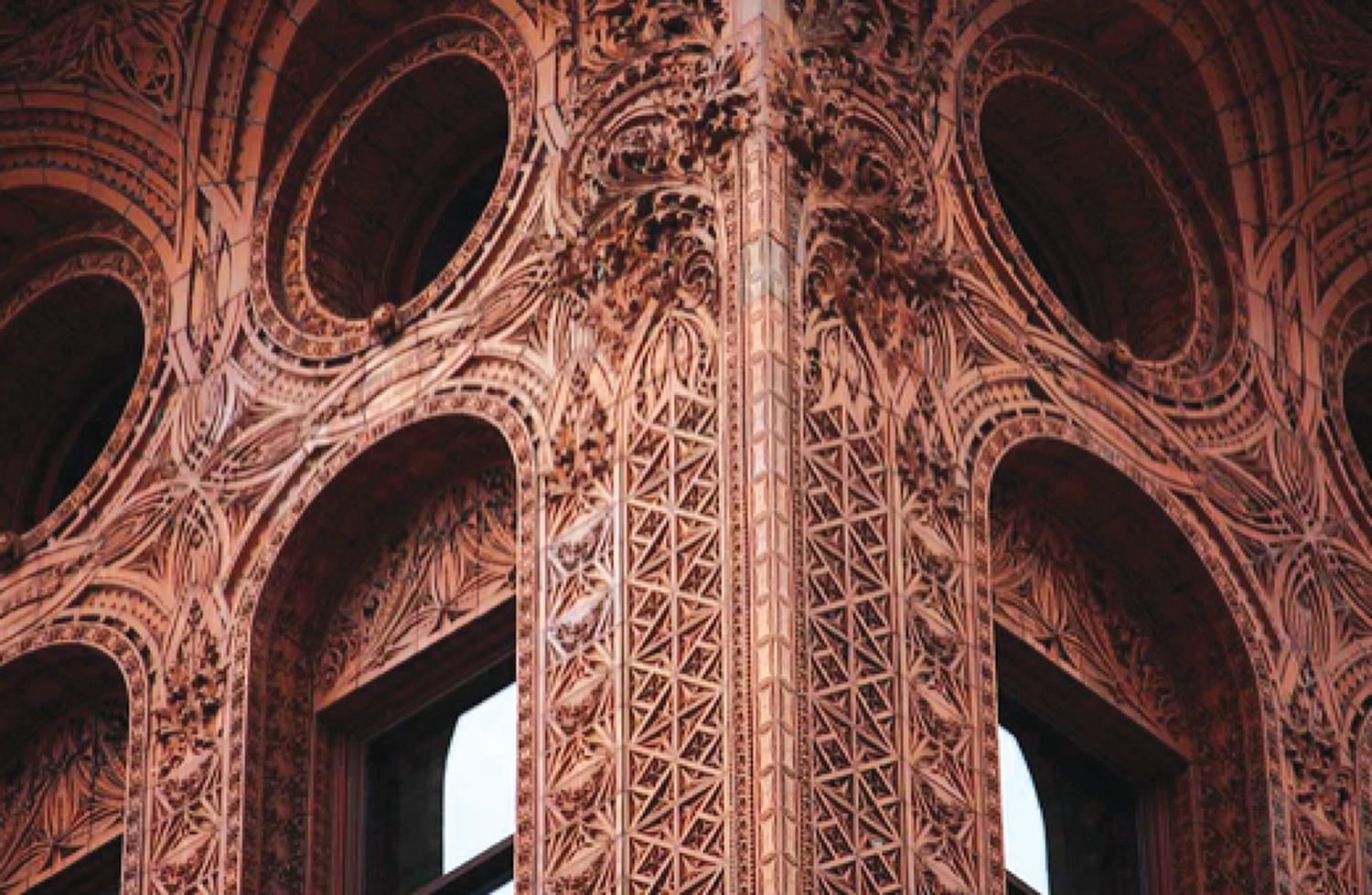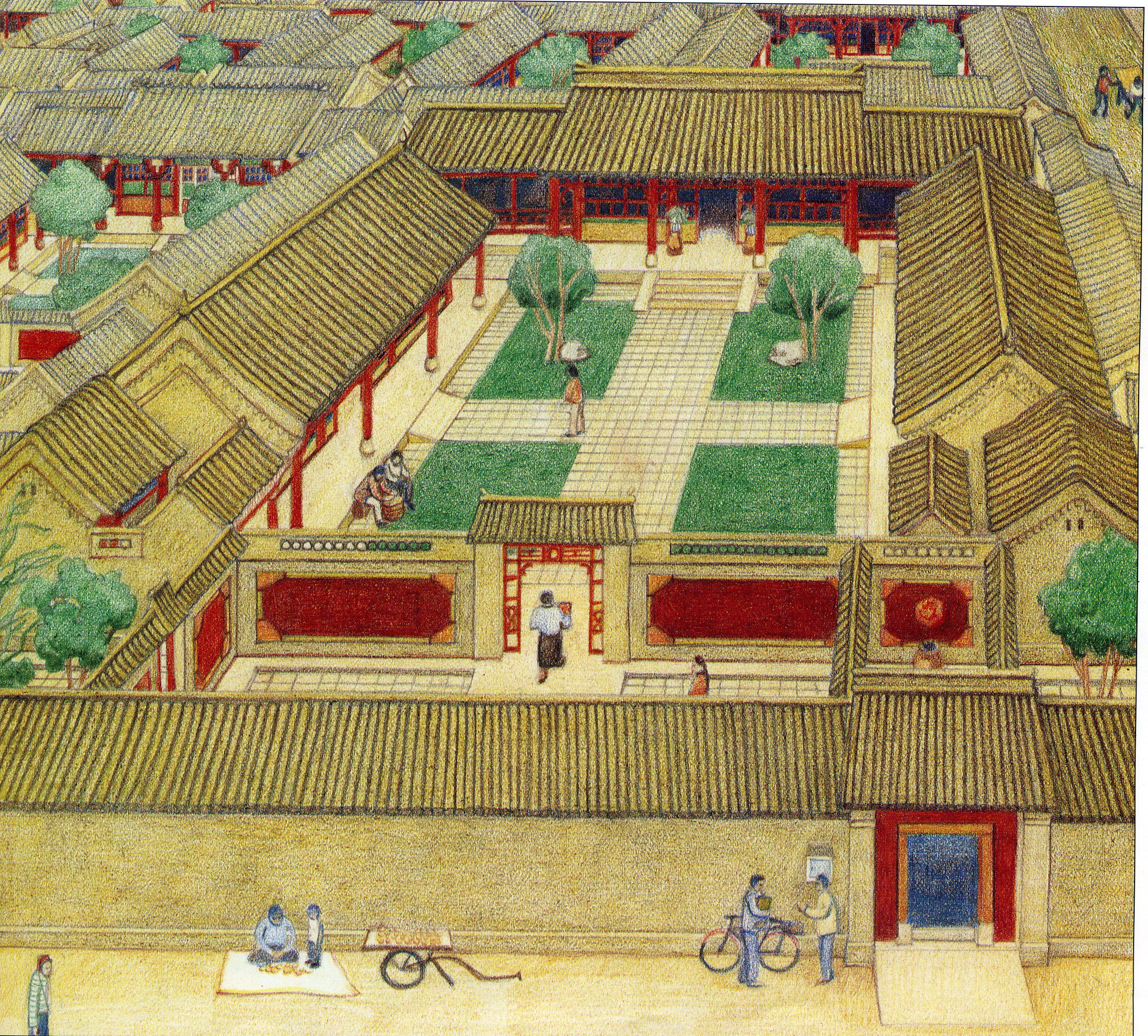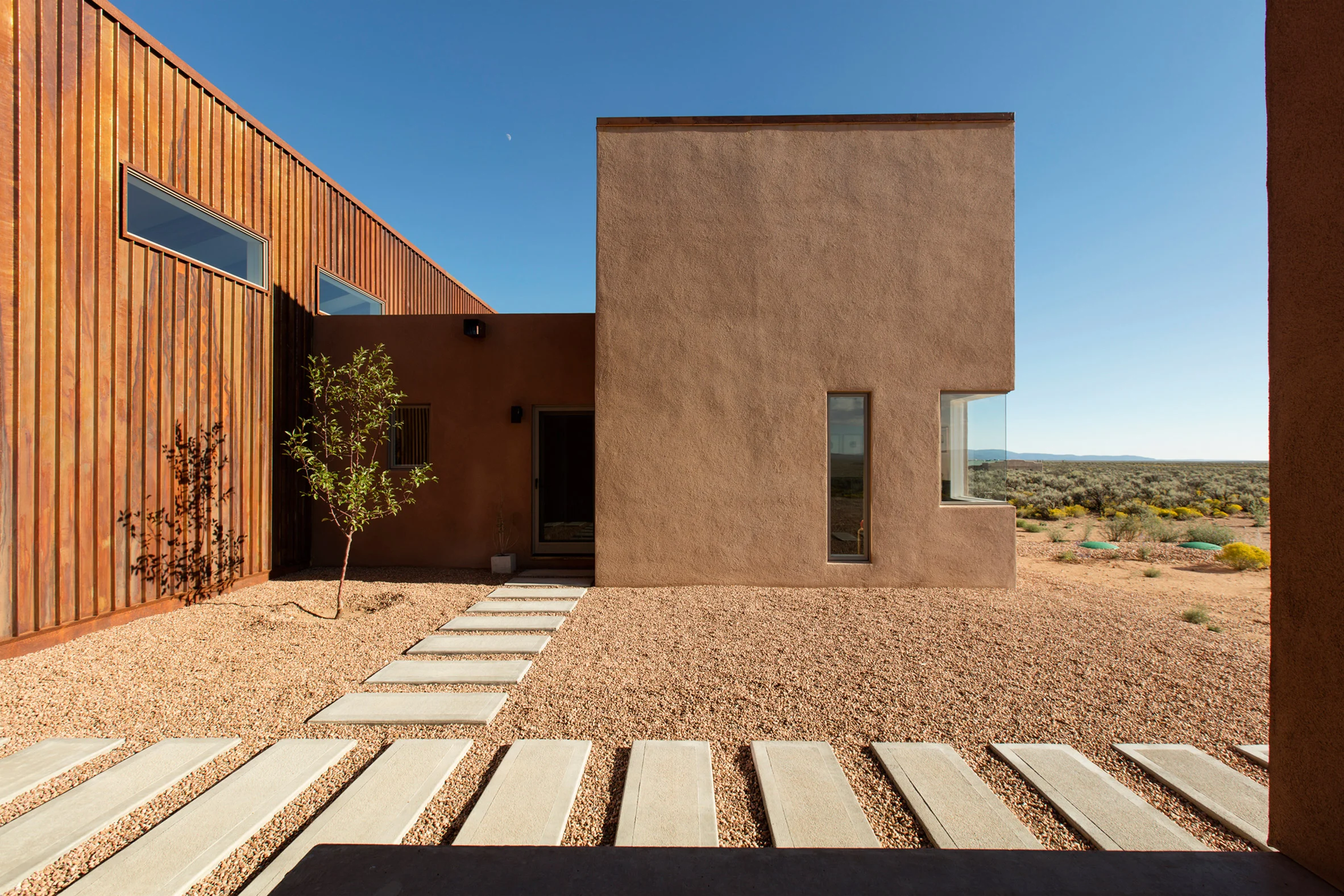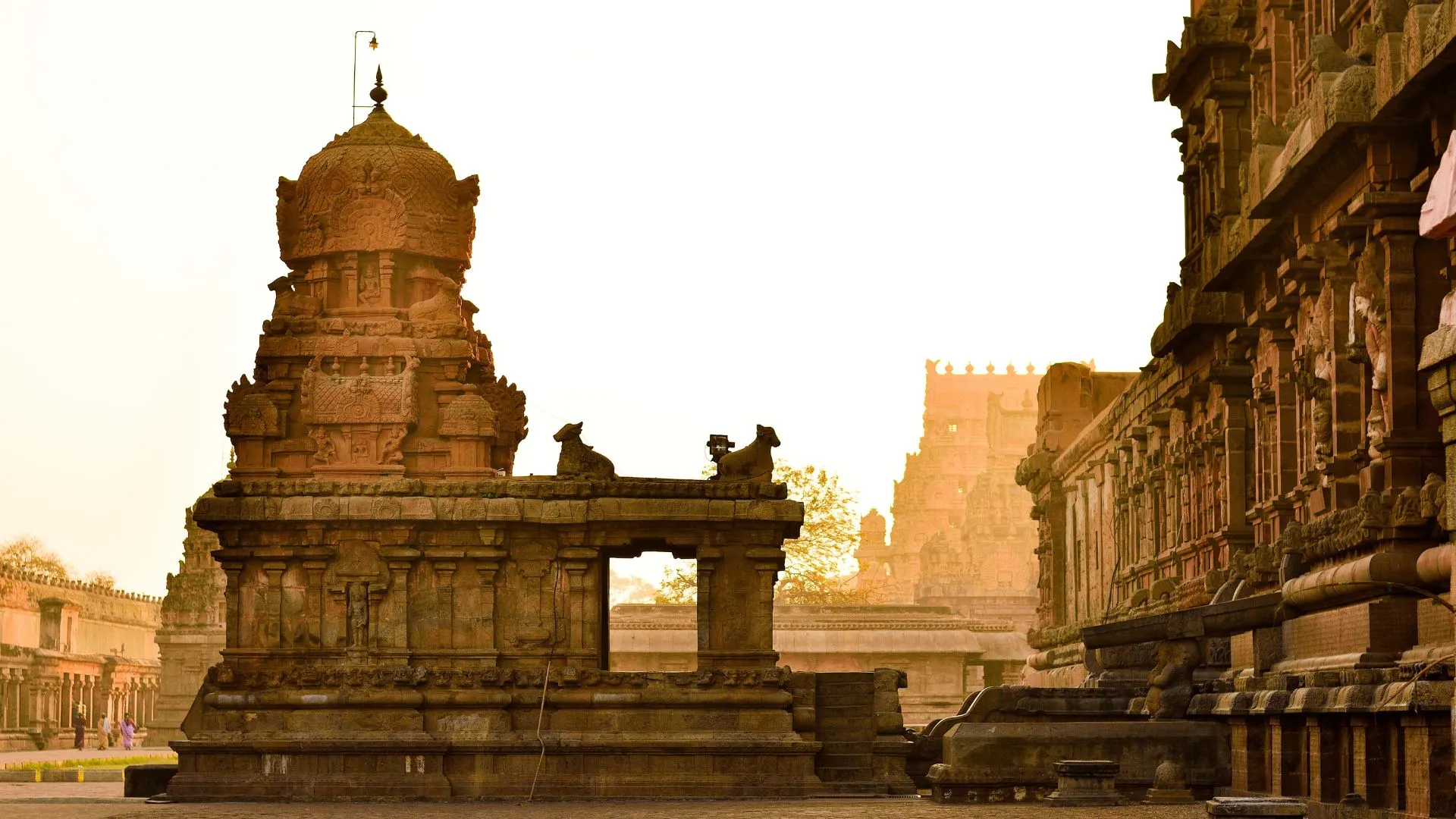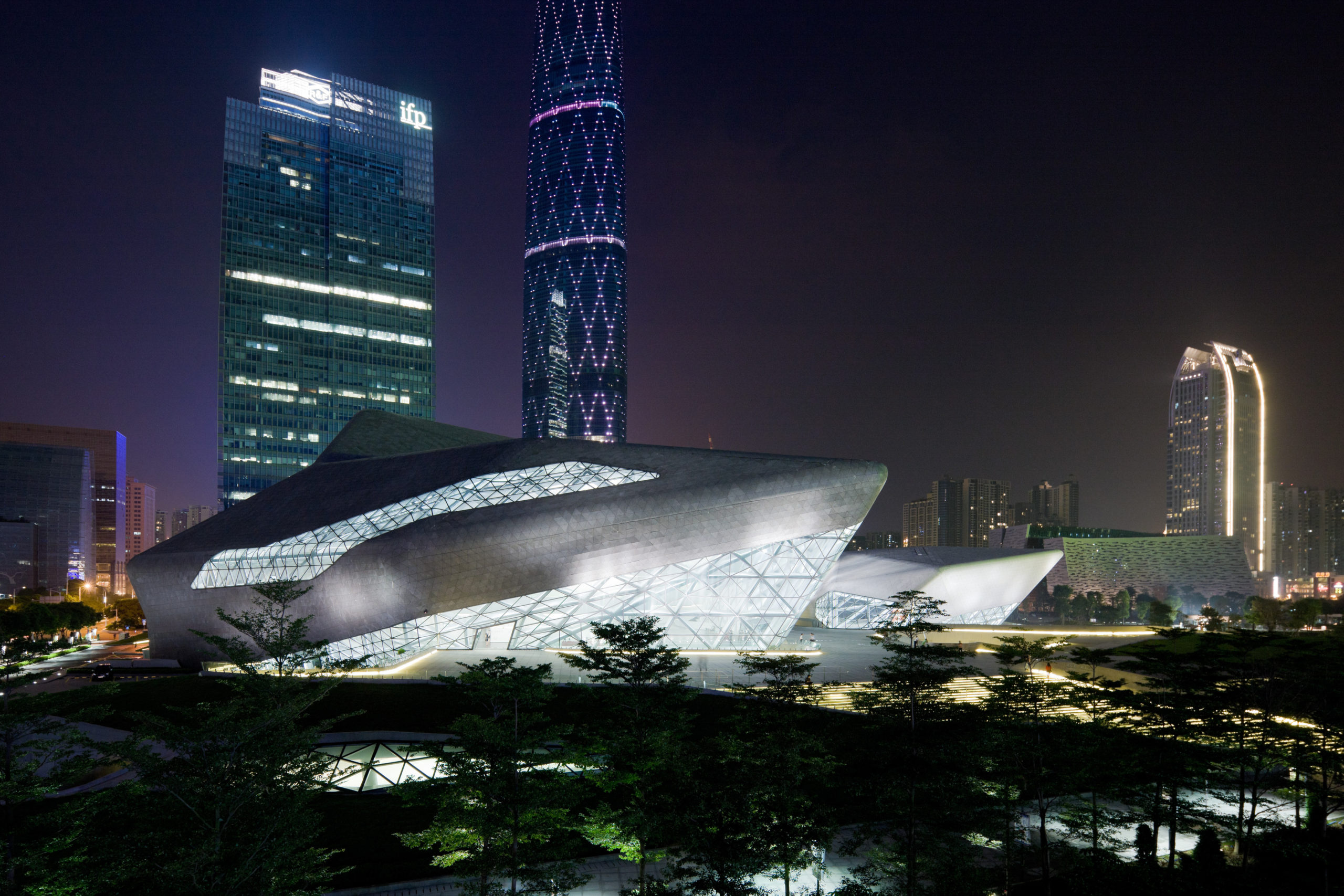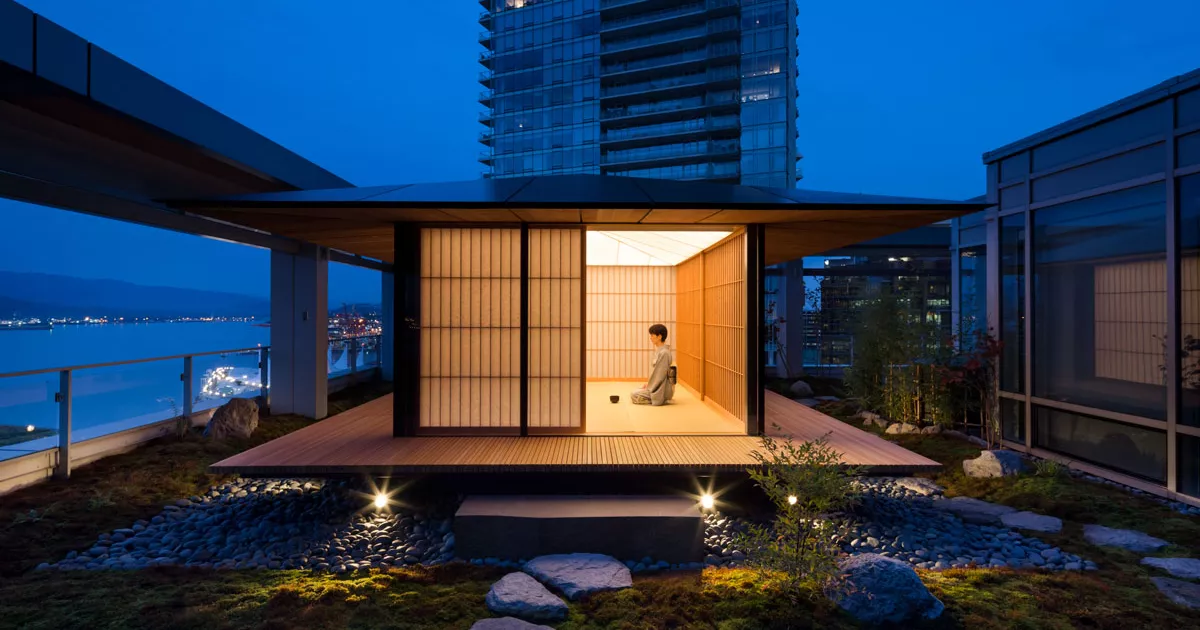A Deep Dive Into Cultural Influences On Architectural Styles
Explore the profound cultural influences on architectural styles as we delve into the intricate tapestry of global styles. From traditional practices to contemporary innovations, discover how cultural heritage shapes buildings, materials, and spatial arrangements, reflecting diverse beliefs and societal values. Uncover the fusion of tradition and modernity, celebrating unique architectural marvels worldwide. Delve into the rich narratives of cultural inspiration, sustainability, and global creativity, transforming mere structures into living expressions of human heritage.
Author:George EvansNov 03, 202314.7K Shares639.9K Views
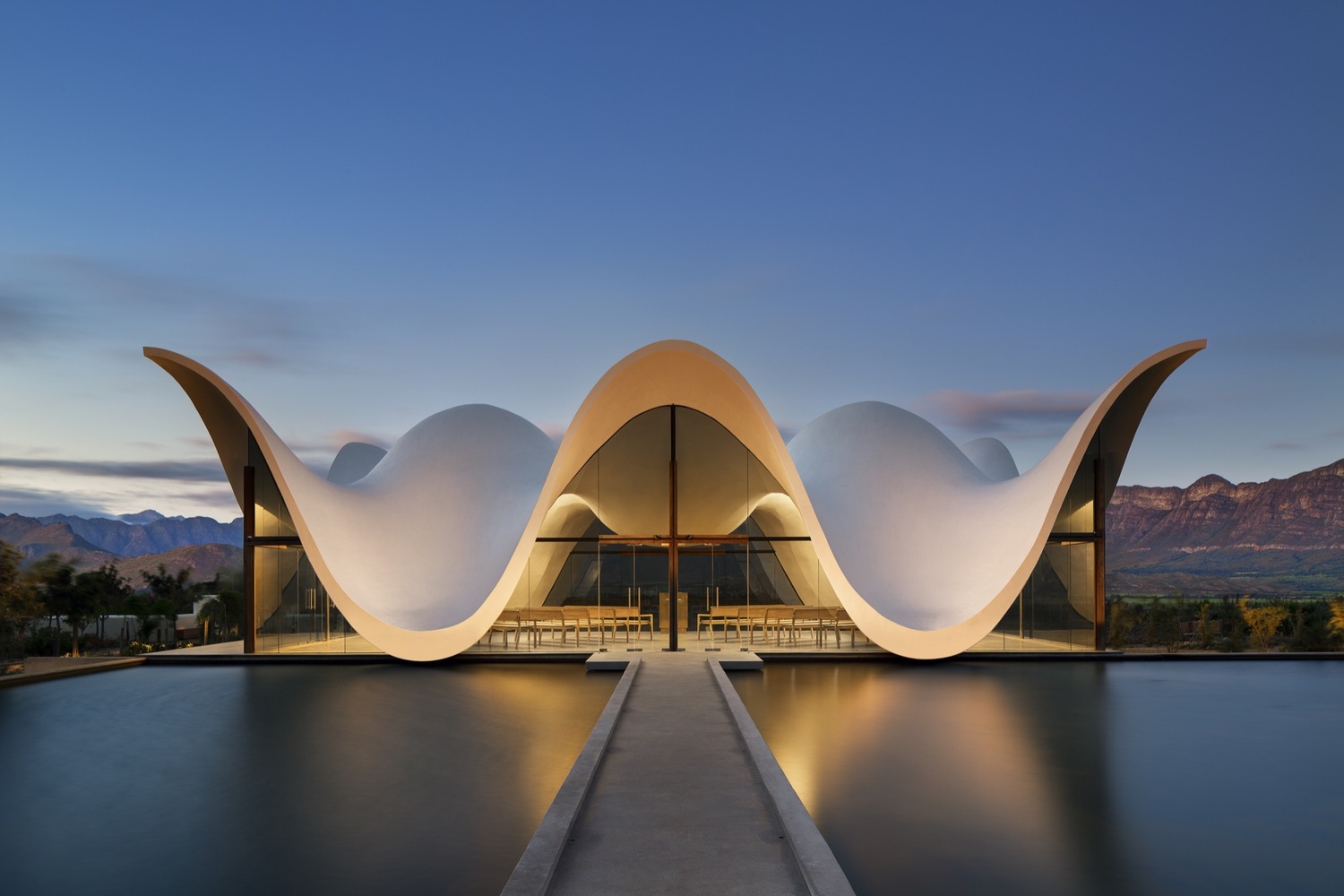
Architecture, the art and science of designing and constructing buildings, is a reflection of the cultural values, beliefs, and traditions of a society.
Throughout history, different cultures have developed unique architectural styles that not only serve functional purposes but also communicate rich narratives about their heritage.
In this article, we will explore the profound impact of cultural influences on architectural styles, examining how diverse societies have shaped the built environment in distinctive ways.
Understanding Cultural Influences In Architecture
Architecture stands as a testament to the collective identity of a society, encapsulating the essence of its history, beliefs, and values. It is not merely a combination of bricks and mortar; it is a language in itself, eloquently narrating the story of a culture. This narrative is woven intricately through various architectural elements, each influenced by the unique traditions and customs of the community it represents.
Building Materials - The Foundation Of Cultural Expression
The very essence of architectural design begins with the selection of building materials, a decision profoundly impacted by the geographical and environmental context of a region. Different cultures have ingeniously harnessed locally available resources to construct their buildings. For instance, in the heart of Japan, traditional wooden structures tell tales of meticulous craftsmanship and a deep-seated respect for nature. The intricate joinery and the use of indigenous timber not only exemplify the Japanese mastery in woodworking but also reflect a harmonious relationship with the natural world.
Construction Techniques - Engineering Marvels Reflecting Cultural Values
Architectural marvels are often born out of the innovative construction techniques developed by civilizations throughout history. These methods, deeply rooted in cultural necessity, have shaped architectural styles and continue to inspire contemporary architects.
The Egyptians, with their awe-inspiring pyramids, mastered the art of stone carving, displaying meticulous precision and dedication to the afterlife. Similarly, the ancient Greeks introduced the world to the grandeur of columns and entablatures, embodying ideals of balance, proportion, and harmony, all of which were highly regarded in Greek society.
Ornamentation - Cultural Symbolism In Architectural Details
Ornamentation serves as a canvas where cultural symbols, beliefs, and stories find expression. Within the realm of architectural aesthetics, intricate patterns, motifs, and symbols are meticulously integrated into buildings, communicating profound meanings deeply rooted in the cultural fabric. Islamic architecture, with its mesmerizing geometric patterns and arabesques, reflects the Islamic faith's emphasis on abstract art, symbolizing the infinite nature of God.
The avoidance of direct representation of living beings in Islamic ornamentation showcases a unique approach, allowing artistic expression while adhering to religious beliefs.
Architectural Manifestations Of Belief Systems - A Journey Through Ancient Cultures
Ancient Rome - The Pantheon As A Testament To Polytheism
In ancient Rome, the architectural marvel known as the Pantheon served as a tangible representation of the Romans' unwavering belief in polytheism. The concept of the pantheon, where all gods were situated at an equivalent position in comparison to each other, was ingeniously transformed into a structure that embodied their religious convictions.
The result was a magnificent circular space adorned with 12 niches placed at equal distances, symbolizing the 12 gods. This architectural embodiment of their belief system became a testament to the Roman reverence for their deities.
The Romans, known for their architectural prowess, meticulously decorated the Pantheon using classical Roman proportions and orders. The enduring legacy of this structure transcends time, standing today as an iconic symbol of ancient Rome and classical architecture. Its dome, a marvel of engineering, has inspired architects across centuries, serving as a reminder of the Romans' innovative spirit and deep-rooted faith.
Vastu Shastra In Hindu Architecture - Sacred Geometry In Design
In the intricate tapestry of Hindu architecture, the principles of Vastu Shastra play a central role. Vastu Shastra, a traditional Hindu system of architecture, lays down precise rules and regulations for spatial design. Rooted in ancient Hindu texts, these principles dictate the layout, proportions, and orientation of buildings, ensuring harmony with the cosmic energies.
The sacred geometry of Hindu temples, with their meticulously planned layouts and intricate carvings, reflects the adherence to Vastu Shastra. Every aspect of these temples, from the placement of deities to the direction of entrances, is carefully aligned with the principles of this ancient architectural science. For Hindu believers, following these architectural guidelines is not merely a tradition but a sacred practice, connecting them to their cultural and spiritual heritage.
Feng Shui In Chinese Architecture - Harnessing The Flow Of Energy
In the realm of Chinese architecture and design, the practice of Feng Shui, also known as chi, holds immense significance. Feng Shui, rooted in ancient Chinese philosophy, emphasizes the harmonious arrangement of spaces to harness positive energy flow, promoting balance, prosperity, and well-being.
Chinese architects and homeowners meticulously incorporate Feng Shui principles into their buildings' designs, ensuring that the placement of doors, windows, and furniture aligns with the flow of energy.
The careful balance of elements and the meticulous attention to spatial arrangements are believed to influence the inhabitants' fortunes. Even in the contemporary world, Feng Shui continues to shape Chinese architectural practices, reflecting the enduring influence of ancient beliefs on modern design.
Architectural Diversity - A Global Tapestry Of Innovation And Tradition
Gothic Architecture - Europe's Spiritual Ascent
Gothic architecture, a defining style of medieval Europe, emerged as a testament to spiritual devotion and the human aspiration for divine connection. Characterized by its pointed arches, ribbed vaults, and flying buttresses, Gothic cathedrals and churches soared skyward, reaching for the heavens.
During an era dominated by the influence of the Catholic Church, these awe-inspiring structures served not only as places of worship but also as symbols of the Church's power and authority.
The grandeur of Gothic architecture, with its intricate stained glass windows and towering spires, invoked a sense of reverence and humility, inspiring generations with its divine beauty.
Adobe Architecture - Sustainable Living In Challenging Climates
In arid regions such as North Africa and the American Southwest, where harsh climates pose formidable challenges, adobe architecture stands as a testament to human ingenuity and sustainable living.
Adobe buildings, crafted from sun-dried mud bricks, offer natural insulation against the scorching heat of the desert sun and the biting cold of the night. This eco-friendly construction method has a minimal environmental impact, utilizing locally sourced materials and reducing the need for energy-intensive production processes.
The resourcefulness of communities residing in these regions is reflected in the simplicity and effectiveness of adobe architecture. These dwellings, with their earthen hues blending seamlessly with the desert landscape, serve as sustainable havens, embodying the harmony between humanity and nature.
Cultural Significance In Architectural Design - A Window Into Societal Traditions
Temples Of South India - Preserving Rituals And Traditions
The ancient temples of South India stand as living testaments to the rich cultural and religious heritage of the region. These architectural marvels not only serve as places of worship but also encapsulate the essence of Hindu traditions and practices.
One striking feature of these temples is the prakara, a circumambulatory path encircling the main idol. This path allows devotees to fulfill the tradition of walking around the idol, symbolizing their spiritual journey and devotion.
Furthermore, these temples feature natyamandapas, stages specifically designed for dances. In ancient times, these dances served as a means of communication, conveying religious principles and stories through intricate movements and expressions. The inscriptions found on the temple’s upapitha, the portion above the plinth, narrate tales and share knowledge.
The demarcation of this part of the wall holds cultural significance, as it is traditionally used for storytelling. Architectural ignorance of these cultural nuances could lead to the creation of a temple that fails to fulfill its intended purpose as a sacred space and a center for learning.
Moreover, these temples are elevated to great heights, ensuring their visibility from long distances. This deliberate design choice serves as a reminder to all inhabitants in the vicinity of the divine presence, reinforcing the spiritual connection between the people and the gods they worship.
Ancient Greece - Agoras As Centers Of Intellectual Discourse
In ancient Greece, public engagement in debates about philosophy, mythology, and science was not merely an activity but an integral part of being Greek. This intellectual discourse found its home in the agoras, bustling gathering places where citizens expressed their thoughts and became active participants in their society.
The agoras, serving as hubs of intellectual exchange, shaped the foundation of democratic dialogue and civic engagement.
Over time, these agoras evolved into public squares, which still exist in major cities today, reflecting the enduring influence of classical city centers.
These squares continue to serve as spaces for public expression, community gatherings, and cultural events. The architectural legacy of ancient Greek agoras persists, connecting the modern world to the intellectual fervor of the past.
Global Architectural Trends - The Evolution Of Contemporary Styles
In the ever-changing landscape of global architecture, the influence of globalization has ushered in a new era of design, blurring the lines between cultures and creating a more uniform architectural language. While this global shift has undeniably resulted in awe-inspiring structures, it has also given rise to a noticeable homogeneity in architectural styles worldwide.
This phenomenon is particularly evident in contemporary architectural marvels such as Germany's BMW Welt, China’s Guangzhou Opera House, and Spain’s City of Arts and Sciences, all of which, while impressive, share a strikingly similar aesthetic despite their diverse cultural contexts.
The Rise Of Contemporary Global Architecture
In the 20th century, a significant shift occurred in architectural trends, leading to a departure from region-specific styles. The emergence of a contemporary architectural style transcends geographical boundaries, allowing architects to explore innovative designs unrestricted by traditional constraints.
This newfound freedom from location-based limitations has led to a proliferation of similar architectural elements across different countries.
The emphasis is no longer solely on reflecting local culture; rather, architects aim for a more universally appealing and modern aesthetic that resonates with a global audience.
Homogenization Vs. Innovation
While the globalization of architectural styles has facilitated the exchange of ideas and techniques, it has also raised concerns about the loss of cultural identity.
The uniformity in architectural designs, although visually appealing, sometimes dilutes the unique character that buildings once held within their specific cultural contexts.
Critics argue that this homogenization might lead to the loss of cultural diversity in architectural expressions, erasing the distinctive features that once defined a region’s built environment.
Shaping The Future Of Architecture
In the face of these challenges, architects and urban planners are tasked with striking a delicate balance between honoring cultural heritage and embracing contemporary global trends.
A growing movement advocates for a fusion of traditional elements with modern designs, creating a harmonious blend that pays homage to the past while embracing the future.
This approach allows for the preservation of cultural identity while fostering innovation and creativity in architectural endeavors.
Cultural Inspiration In Contemporary Architectural Designs - A Global Mosaic Of Creativity
In the ever-evolving realm of contemporary architecture, culture stands as an enduring muse, shaping the very essence of innovative designs. While modern design trends sweep across the globe, the influence of culture continues to be a driving force, injecting depth, meaning, and uniqueness into architectural creations.
This harmonious blend of tradition and innovation not only preserves cultural heritage but also creates architectural marvels that resonate with the spirit of diverse societies.
A Celebration Of Diversity
Contemporary architects, drawing inspiration from the rich tapestry of global cultures, have embarked on a transformative journey. They weave intricate threads of tradition into the fabric of modern architectural designs, celebrating the diversity of human heritage. From the vibrant colors of Moroccan riads to the minimalist elegance of Japanese tea houses, cultural nuances find expression in every line, curve, and material choice, creating spaces that echo the stories of their origins.
Local Heritage, Global Appeal
In the pursuit of authenticity, architects often delve deep into local traditions, extracting gems of wisdom from indigenous architectural practices.
These insights are ingeniously integrated into contemporary designs, resulting in buildings that exude local charm while embracing a global audience. The fusion of ancient craftsmanship with modern technologies produces structures like no other, each telling a unique tale of cultural resilience and creativity.
Sustainability Rooted In Tradition
Cultural inspiration doesn’t merely stop at aesthetics; it extends to sustainable practices deeply rooted in different societies. Architects, recognizing the eco-friendly wisdom embedded in traditional techniques, harness these methods to create environmentally conscious designs.
From the vernacular architectureof African communities, utilizing natural materials, to the water conservation practices of ancient civilizations, contemporary architects are adopting sustainable approaches that honor cultural heritage and nurture the planet.
Preserving Cultural Identity: A Global Dialogue Of Creativity
As we explore the intersections of culture and contemporary architecture, it becomes evident that these designs are not just physical structures but living narratives.
They reflect the soul of communities, fostering a global dialogue that transcends borders and ideologies. By embracing cultural inspiration, architects are not only shaping spaces but also weaving a tapestry of understanding and appreciation for diverse cultures worldwide.
For further insights into cultures that have deeply influenced contemporary designs, visit Bugbog, where you can explore the diverse heritage that continues to shape architectural creativityaround the world.
Cultural Influences On Architectural Styles - People Also Ask
How Does Culture Influence Architectural Design?
Culture profoundly influences architectural design in several ways. It dictates the choice of building materials, construction techniques, ornamentation, and spatial arrangements, reflecting the cultural values, beliefs, and traditions of a society.
For example, cultures with a deep connection to nature may incorporate natural elements into their designs, while those valuing communal living may emphasize open spaces and shared areas in their architectural layouts.
Cultural practices, rituals, and local climate conditions also impact architectural decisions, ensuring that buildings align with the way people live and interact within their communities.
What Influences Architectural Styles?
Architectural styles are influenced by a myriad of factors, including historical context, technological advancements, social and economic conditions, religious beliefs, and cultural practices.
Historical events and political movements can lead to shifts in architectural styles, as seen in the transition from Gothic to Renaissance architecture during the European Renaissance period.
Additionally, technological innovations enable architects to experiment with new materials and construction techniques, shaping the evolution of architectural styles over time.
How Is The Culture Of The People Reflected In The Architectural Style?
The culture of a people is reflected in architectural style through various elements. Traditional symbols, motifs, and ornamentation patterns are often integrated into buildings, conveying cultural beliefs and narratives. Architectural layouts can reflect social structures, with some cultures emphasizing communal spaces and others valuing individual privacy.
Additionally, the use of specific materials indigenous to the region, as well as construction techniques passed down through generations, serves as a direct reflection of cultural heritage. Through these elements, architectural styles become a tangible expression of a society's identity, history, and way of life.
Conclusion
In an era of globalization, where architectural styles often blend and merge, it is crucial to celebrate and protect the unique cultural identities reflected in buildings. By doing so, we honor the legacy of our ancestors, promote cultural diversity, and enrich the architectural tapestry of the world, ensuring that the stories of our past continue to inspire and resonate with generations to come.
Jump to
Understanding Cultural Influences In Architecture
Architectural Manifestations Of Belief Systems - A Journey Through Ancient Cultures
Architectural Diversity - A Global Tapestry Of Innovation And Tradition
Cultural Significance In Architectural Design - A Window Into Societal Traditions
Global Architectural Trends - The Evolution Of Contemporary Styles
Cultural Inspiration In Contemporary Architectural Designs - A Global Mosaic Of Creativity
Cultural Influences On Architectural Styles - People Also Ask
Conclusion

George Evans
Author
George Anderson, an exceptional architectural designer, envisions and brings to life structures that transcend the realm of imagination. With an unwavering passion for design and an innate eye for detail, George seamlessly blends form and function, creating immersive spaces that inspire awe.
Driven by a deep appreciation for the interplay of space, light, and materials, George's innovative approach redefines the possibilities of architectural design. His visionary compositions leave an indelible mark, evoking a sense of wonder and transforming the built environment.
George Anderson's transformative designs and unwavering dedication continue to shape the architectural landscape, pushing the boundaries of what is possible and inspiring generations to come.
Latest Articles
Popular Articles
